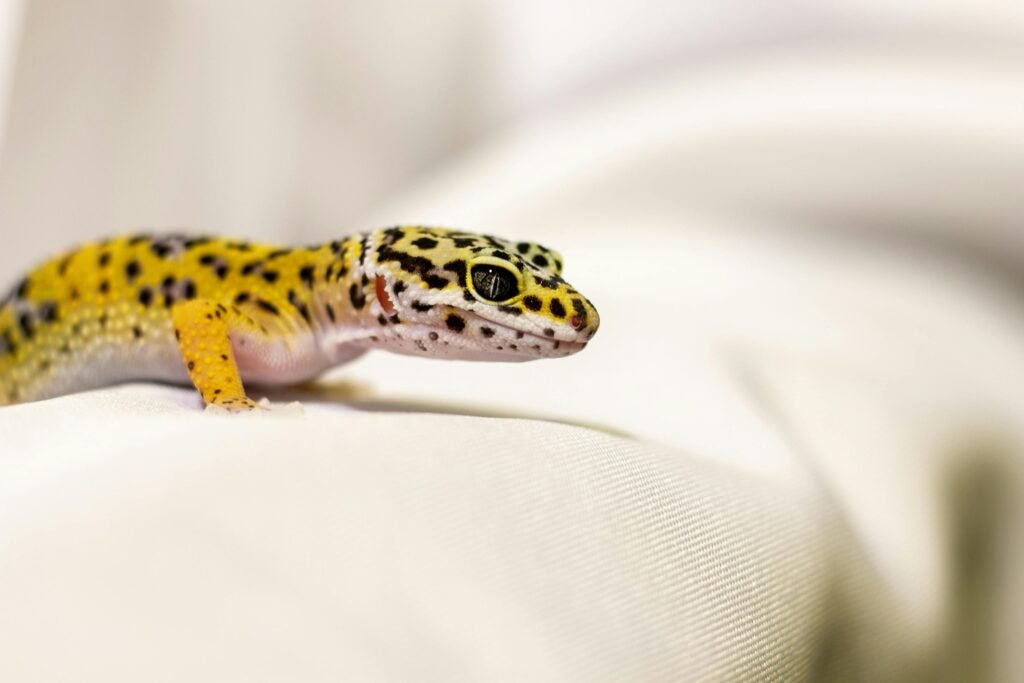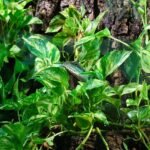Leopard geckos are captivating pets that can bring joy to any home. To care for a leopard gecko, provide a properly set up terrarium, maintain appropriate temperature and humidity levels, and ensure a balanced diet that includes live insects and supplements. Understanding their specific needs is essential for keeping them healthy and happy.
With the right environment and diet, your leopard gecko can thrive as a beloved companion. This article covers everything you need to know to take care of your new reptile. There are also product links throughout to help you find everything you need.
Leopard Gecko Basics
Leopard geckos are popular reptiles known for their unique appearance and relatively easy care requirements. Understanding their characteristics, behavior, and growth patterns will help you provide the best environment for your pet.
Species Overview
Leopard geckos (Eublepharis macularius) are native to the arid regions of Central and South Asia. They are recognized for their distinctive spotted patterns and have a range of colors, including yellow, white, and various hues of orange.
Behavior and Temperament
Leopard geckos are known for their docile and friendly behavior. They are nocturnal, meaning they are most active during the night. This characteristic makes them enjoyable to observe in the evenings.
You may find that they enjoy being handled once they become accustomed to you. Handling should be gentle to keep stress levels low. Remember, each gecko has its own personality, so be patient as yours gets comfortable in its environment.
Life Span and Growth
In captivity, leopard geckos typically live for 15 to 20 years with proper care. Growth rates can vary, but they generally reach sexual maturity around 6 to 12 months of age.
Juvenile geckos require more frequent feedings to support their growth. Adults should be fed a diet of gut-loaded insects a few times a week. Regular health check-ups are essential to monitor growth and detect any potential issues early.
Setting Up the Habitat
Creating an appropriate habitat for your leopard gecko is essential for its health and happiness. Focus on providing the right enclosure, substrate, temperature, lighting, humidity, and decor to mimic its natural environment.
Enclosure Requirements
Choose a terrarium that is at least 20 gallons for one leopard gecko. Glass terrariums provide good visibility and ventilation. The dimensions should ideally be at least 30” x 12” x 12” for proper movement.
Secure a lid or mesh cover to prevent escapes and ensure airflow. Leopard geckos do best in a horizontal space, so prioritize length over height. Avoid placing the enclosure near direct sunlight or drafts to maintain stable conditions.
Links: Find glass, pvc, and custom reptile enclosures here >Reptizoo
Substrate Selection
There is lots of debate around substrate for leopard geckos. There are two main types of substrate: loose and solid. Loose substrates are things like dirts and sands. Solid substrates include tile, paper towels, and news paper. Many argue that loose substrates shouldn’t be used because they could cause impaction. Impaction is when a gecko accidentally swallows substrate and it gets stuck in their digestive system causing many health issues. Other reptile owners claim that impaction can be avoided by meeting proper care requirements.
The decision is ultimately up to you, but I would recommend beginner reptile owners use solid substrates like paper towels or tile to be safe. Both are easy to clean but tile can create a more natural look. If you use tile make sure it fits properly in the enclosure and there are no cracks for your geckos toes to get caught in.
Temperature and Lighting
Leopard geckos need a temperature gradient within the enclosure. Set the warm side between 88°F and 92°F using an under-tank heater or heat mat (should cover 1/3 or the length of the enclosure). When using an kind of heating element you must use a thermostat with it. Without this the heating pad could get far to hot and could burn your gecko. The cool side should be around 75°F to 80°F.
Use a digital thermometer and temperature gun to monitor temperatures accurately. Lighting is also crucial; while they do not require UVB light, a light cycle mimicking day and night helps regulate their behavior. A low-wattage bulb can be used for ambient light.
Links: Heat Mat Thermostat Digital Thermometer + Hydrometer Temperature Gun
Humidity and Hydration
Maintain humidity levels between 30% to 40% for optimal health. Use a hygrometer to monitor moisture. Provide a moist hide containing damp sphagnum moss to aid in shedding.
Ensure clean, fresh water is always available in a shallow dish. Change the water daily to prevent bacterial growth. Check the humidity and adjust as needed, especially during shedding periods. A moist hide could also be helpful for shedding. To make one place damp(not soaking wet) sphagnum moss or paper towels in a hide.
Links: Digital Thermometer + Hydrometer
Decor and Hides
Include hiding spots to reduce stress. Use caves, rocks, and logs to create naturalistic environments. Ensure these hides are secure and offer multiple entrances.
Incorporate climbing structures and levels to encourage exercise. Arrange items to provide both shelter and exploration opportunities, mimicking the leopard gecko’s native habitat. Avoid sharp objects that could injure your gecko.
Links: Find hides and decor here> Reptizoo
Dietary Requirements
Leopard geckos have specific dietary requirements to ensure their health and well-being. Here are the key components of their diet:
- Insects: Leopard geckos primarily eat live insects. Suitable options include:
- Crickets
- Mealworms
- Dubia roaches
- Waxworms (as an occasional treat)
- Calcium and Vitamins: It’s essential to provide calcium and vitamin supplements to prevent deficiencies:
- Dust insects with calcium powder (with D3).
- Use a multivitamin supplement once a week to ensure they receive essential vitamins.
- Feeding Frequency: Young leopard geckos should be fed daily, while adults can be fed every other day or every few days, depending on their size and activity level.
- Water: Fresh, clean water should always be available. A shallow dish can be provided for drinking. Use purified water or add ReptiSafe to water so it is safe for your gecko to drink.
Always ensure that the insects offered are appropriately sized for the gecko to prevent choking hazards. A good rule of thumb is that the insect should be no wider than the space between there eyes. Regular monitoring of their health and weight is also crucial to adjust their diet as needed.
Links: Calcium Powder with D3 Multivitamin Feeding Tongs ReptiSafe
Conclusion
I hope you found all of this information to be helpful to you. Thank you for reading and good luck taking care or your new gecko. They truly are amazing pets and a blast to keep. If you liked this article and want to learn more about reptiles and other pets check out some off our other posts!
As an Amazon Associate I earn from qualifying purchases



